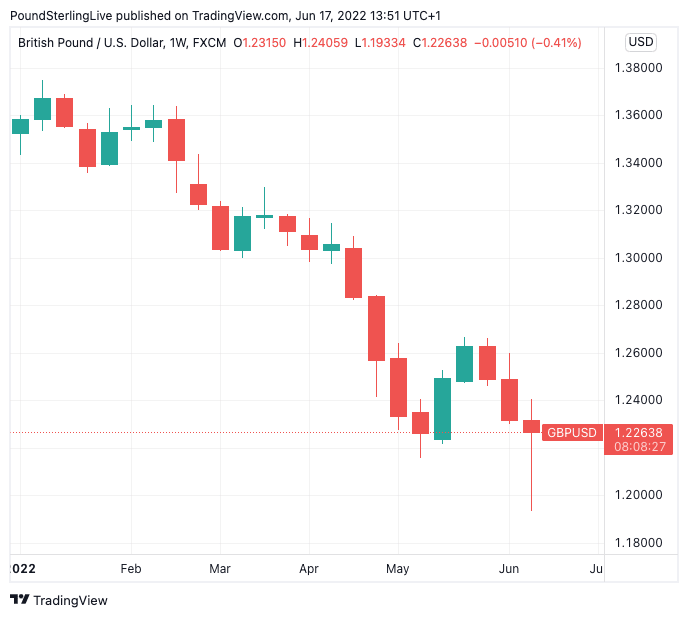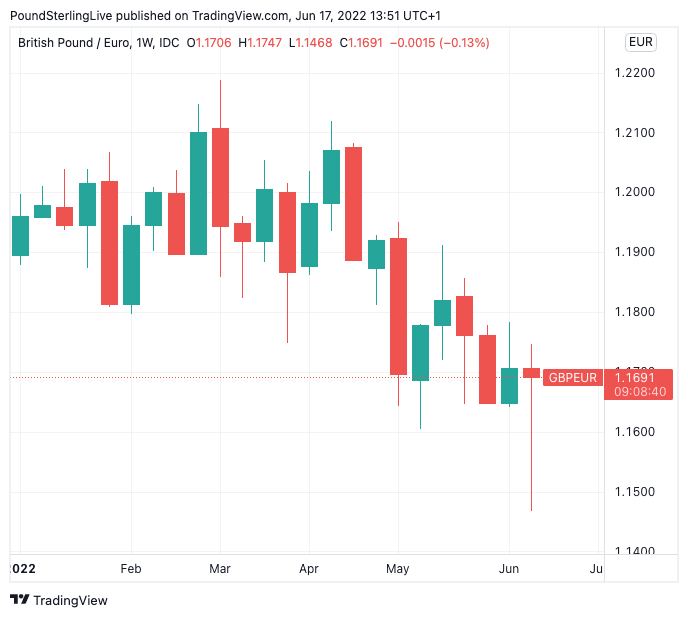Pound Sterling's Week Ahead: Inflation Data is Key Domestic Driver but Global Market Trends set to Dominate
- Written by: Gary Howes
-

Image © Adobe Images
The domestic highlight for the British Pound this week will be the release of inflation data on Wednesday although Friday's retail sales read will also be highly anticipated, but it will be global market trends that ultimately dictate direction direction in Sterling over coming days.
The data releases come days after the Bank of England raised interest rates by 25 basis points but warned that bigger and more hikes are likely over coming months if the data demands it.
The Pound initially fell on the initial 25bp hike announcement as markets thought more was warranted given surging inflation, but it rose as it became clear the Bank is likely to be more aggressive going forward as it finally prioritises inflation targetting over GDP growth management.
The key takeaway from Thursday's BoE policy update is that data matters, therefore Wednesday's inflation numbers will be of great importance.
Headline CPI inflation likely rose by 0.2 points to 9.1% year-on-year in May which would be the highest since records began in 1989.
Core inflation probably rose 0.1 points to 6.3% year-on-year.
This would mean the UK now has hotter core CPI than either the Eurozone or the U.S.
A big beat in these headline numbers could push UK bond yields higher as investors anticipate further Bank Rate hikes, aiding Pound exchange rates alongside.
Above: GBP/EUR at weekly intervals showing 2022 performance.
PMI numbers on Thursday will meanwhile give the first major snapshot of how the UK economy performed in June.
Markets are looking for the flash Composite component of the PMI set to read at 51.8, unchanged on May.
Manufacturing PMI is expected to come in at 54.6 and the all-important Services PMI at 53.0, down on May's 54.6.
Retail sales on Friday will give an insight into how consumers are reacting to rising inflation and are forecast to have contracted 0.9% month-on-month in May, down on the 1.4% growth registered previously.
A strong set of retail numbers would indicate to the Bank of England inflationary pressures continue to build as solid demand will only encourage businesses to pass on cost pressures.
A beat would therefore on balance be supportive of the Pound.
Ahead of the data the GBP to EUR exchange rate is seen at 1.17 having fallen just 0.10% percent last week while the GBP to USD exchange rate is at 1.2284 having fallen by just a third of a percent. (Set your FX rate alert here).
Global market sentiment will also be a key determinant of where Sterling moves given this is a pro-cyclical currency that tends to muster support during times of global economic upswings.
Last week saw some major U.S. indices officially fall into a bear market, meaning the backdrop for the Pound remains challenging given more equity losses are more likely than not.

Above: GBP/USD at weekly intervals showing 2022 performance.
"We remain bearish on sterling given the deterioration of the UK economy and because we expect much less tightening than is still priced in by the UK forward curve. Repricing risk is still a cloud hanging over sterling," says Roberto Mialich, UniCredit Milan.
"Data on positioning suggest investors are already net short GBP-USD at close to record levels, but this might only slow the pair’s fall below 1.20. We see GBP-USD at 1.15 and EUR-GBP above 0.95 by 4Q23," he adds.
EUR/GBP at 0.95 is GBP/EUR at 1.0526.












